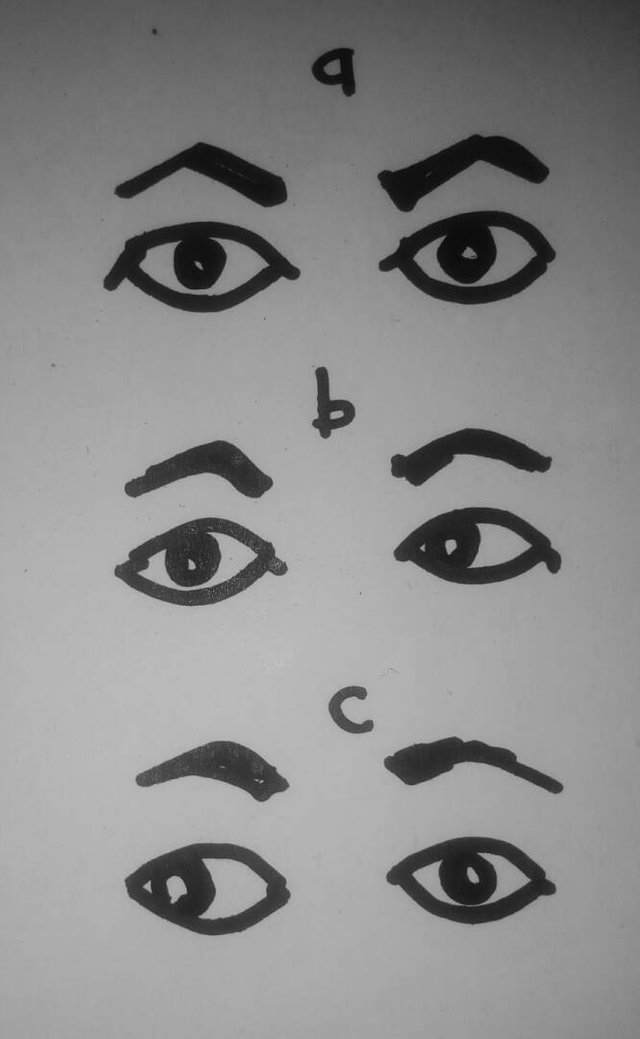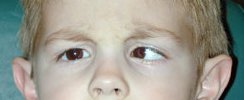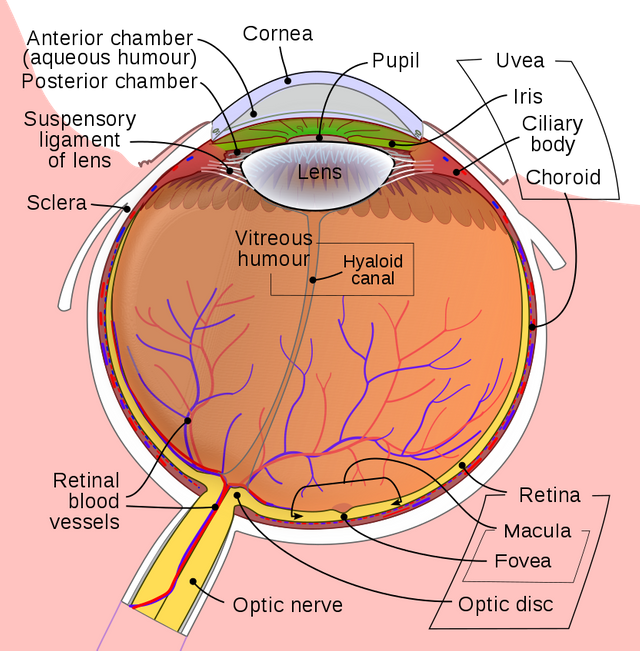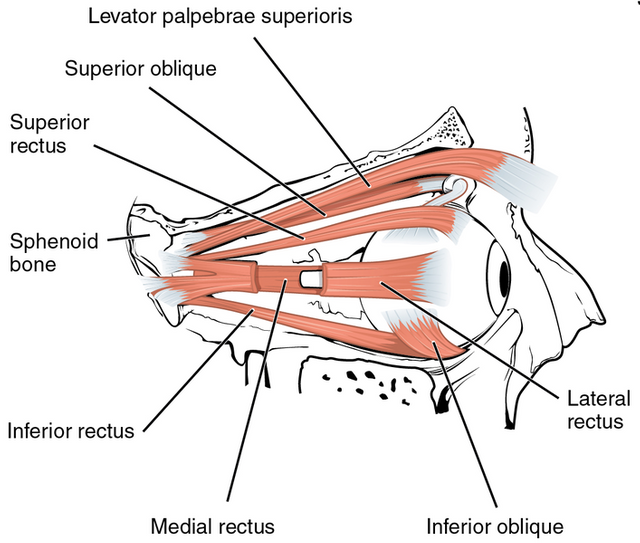Hey beautiful people. I have come again. I hope this meets you happy. If for anything, that I also am happy to be writing again. I have always seen it as quite a task mostly because of my particularly busy schedule. I am strongly of the school of thought that if it must be done at all, then it must be done right. That of course requires putting in the time. Anyway, I happen to be relishing every bit of the experience as lately, I am stuck with almost an unlimited amount of free time. Before I get carried away with my much meaningless rant, let me tell you a short,
I thought it was funny, that story.
If you didn't see that story, there was a surgeon there, and he had what is almost generally referred to as ‘half past four eyes’ also known by a lot of people as ‘squint’ or ‘crossed eyes’. However, the medical name for this condition or any condition of eye alignment wherein both eyes do not seem to focus on the same thing at the same time (an eye turn) is Strabismus.
If you belong to the group that call an eye turn half-past-four eyes, I humbly bring to you a drink from the rivers of correction today.
Strabismus is a functional vision problem. Functional vision is related with a person’s ability to see an object in space. ‘An object in space’ basically refers to anything that has depth and volume. Functional vision also deals with how the entire visual system which summarily consists of the eyes, brain and visual pathways work together to help interact with or react to the object.

Functional vision includes but is not limited to the visual skill areas of eye focusing or accommodation, eye movement or tracking and eye teaming or binocular vision.
Eye Focusing.
When looking from place to place, we have to refocus our eyes. This is because our focusing system is constantly working so well that objects always turn out to be in focus. Notwithstanding, in the real sense, each time we look in another direction, however slightly, a focusing adjustment is made. This adjustment is made possible through the action of a muscle situated inside the eye. The muscle is called the ciliary or focusing muscle. The medical term for this process is known as “Accommodation”
Given a situation where I am writing from the board in class.
To look at my book on my desk from the board would imply that I must tighten or contract the ciliary muscle. This leads to the lens inside my eyes to change its shape, thereby enabling me to see my note clearly (focus). Conversely, when I raise my head to look back at the board, I must now relax the ciliary muscle to achieve clear distance vision.
An individual is said to have a focusing problem the moment the person is unable to contract or relax the ciliary muscle accurately and quickly, or if the muscle contraction cannot persist for adequate periods of time during desk work.
Eye tracking.
The eyes must move swiftly, smoothly and accurately as we look from place to place in order to see efficiently. Eye tracking is a fine motor skill called ocular-motor skill or ocular-motor control and should develop from a young age and as we grow older like other fine motor skills. Basically, there are four types of eye movements: Saccades, Vergence, Smooth pursuit and Vestibulo-ocular movements.
Saccades are used to move the fovea rapidly from a point of concern to another. They occur reflexively when the eyes are opened, however, they can be evoked voluntarily. Vergence movements adjust the fovea of each eyes on objects placed at different distances. They are disconjugate unlike other types of eye movements wherein the eyes move in the same direction (conjugate). Smooth pursuit movements help to adjust the fovea in line with a moving object. Amazingly, smooth pursuit movements are voluntary, but at the same time very difficult to trigger at will in the absence of a moving object. (feel free to try it). Vestibulo-ocular movements focus the fovea at a point of concern when the head or/and body is moving. They are reflex responses wherein the eyes move in the opposite direction of the head and at equal speed.
Peradventure, you experience frequent loss of place while reading, or you skip lines or words during reading, or perhaps you are always moving your head or pointing at the words, or if possess slow reading speed, poor copying, and poor eye hand coordination, I am sorry to be the bringer of ill news, but chances are quite high that you have a tracking problem.
Eye teaming.
Both our eyes are meant to work together as one ‘unit’ and maintain a single image at all times. This visual efficiency skill is known as eye teaming and is important for depth detection. It is what allows our brain to merge the two separate pictures captured by each eye into a single, three-dimensional image. No wonder it is also termed binocular vision. People with teaming problems experience double vision, blurred vision, headaches and eyestrain, especially when reading or during close work. Poor teaming skills may inhibit athletic performance in sports requiring accurate depth perception, including football, tennis, baseball and basketball.
The most common types of teaming problems are convergence insufficiency – wherein the eyes turn out or tend to turn out during close work, and convergence excess – wherein the eyes turn in or tend to turn in during close work. Neither of these problems may be detected immediately by just looking at the person. However, a vivid form of eye teaming problem exists wherein the eye drift, either inwards or otherwise can be seen. This is known as STRABISMUS. Seems like ages ago since I last typed it.

WHAT CAUSES STRABISMUS?
Each eyeball has six muscles attached to its outside (extrinsic). Rectus muscles (four of them, one for each) are responsible for movement of the eyeballs in the four cardinal directions while the pair of Oblique muscles helps to keep focus while the head is moving (vestibulo-ocular movements….if you have been following).
Problems with these eye muscles, the nerves carrying messages to them, or the brain’s control center that handles eye movements can cause strabismus
It can also develop due to uncorrected farsightedness, a cataract, an eye injury or certain health conditions (or disorders) that affect the brain such as Cerebral palsy, Down syndrome, Hydrocephalus (water on the brain), brain tumors etc.
Having said all that, a large majority of people with strabismus have a family history of strabismus. Needless to say, it can be genetically transferred.

WHAT DOES STRABISMUS CAUSE?
Diplopia (double vision) – adults who develop strabismus often experience double vision because their brains have adapted to receiving images from both eyes and cannot immediately ignore images from the turned eye. In children, strabismus does not result in diplopia, which brings us to the next point.
To avoid diplopia, vision in the turned eye may turn off or be suppressed by the brain. This condition is called Strabismic amblyopia. Most times, when a child has strabismus, it results in strabismic amblyopia.
Anomalous retinal correspondence or eccentric fixation – although both eyes are not directed at the same spot, the brain creates a new match with each eye to establish fusion (binocular vision). This can only occur early in life and with the strabismus being less than four eyes. Miracles do happen though…lol!

CLASSES AND TYPES OF STRABISMUS

Image by me @mellz using a mobile phone camera
Strabismus can be classified:
Based on direction of eye turn.
- Upward turn – Hypertropia
- Downward turn – Hypotropia
- Inward turn – Esotropia or Convergent Strabismus
- Outward turn – Exotropia or Divergent strabismus
Based on the frequency of eye turn
- Intermittent
- Constant
Based on which eye turns
- If it involves the same eye – unilateral
- If it shuffles between both eyes - alternating

I might be required to write a sequel if I were to talk about all the types of strabismus that can develop in children and adults but I very much despise the thought of having to write a sequel. With the FIFA World Cup underway, who knows when a sequel will be ready. That being that, I will just touch the most common forms which happen to be intermittent exotropia and accommodative esotropia.
Accommodative Esotropia
This one is as a result of uncorrected farsightedness or hypermetropia. (I think it’s safe to say when you see “-opia”, it has to do with a visual disorder of some sort!) hypermetropia is also called hyperopia. The eye’s focusing (accommodating) system and the eye alignment (binocular) system are linked, and farsighted people may experience difficulty trying to integrate both systems by focusing extra hard to keep images clear. This can result in inward turning or esotropia. Symptoms of this type of strabismus may include diplopia, closing one eye during close work and turning or tilting the head in order to focus.
If the inward turning only occurs during close work, then glasses may be prescribed for near tasks to lower or eradicate the esotropia. If otherwise, that is, if the esotropia occurs more when focusing on far objects than near, a multifocal lens may be prescribed. Whatever the case, the optometrist reviews and suggests the best form of treatment. While vision therapy can be beneficial, accommodative esotropia doesn’t require surgery.
Intermittent Exotropia
Most exotropia is intermittent, that is, the outward turning of the eyes only occurs occasionally. In a lot of cases, the outward deviation may appear to be very visible when the person is stressed out, ill, tired or even anxious. A certain bright side to intermittent exotropia is that provided both eyes are straight for some time, the visual system including the brain will develop some normal functioning of binocular vision and depth perception, and hence a possibility for improved vision in the future exists.
Persons with intermittent exotropia may experience eye strain, headaches and reading difficulty. In bright sunlight, a person with this type of strabismus close one eye. Intermittent exotropia may be a symptom or a result of Convergence insufficiency when the eye turn only occurs when focusing on close objects. Treatment options include vision therapy, use of eye patch, eyes glasses and very rarely surgery.

DIAGNOSING STRABISMUS.
Strabismus can be diagnosed through a comprehensive eye exam. Visual acuity (ability to see 20/20), accommodation, eye muscle coordination and depth perception form and develop early in humans (about 6 – 9 months). At 9 months, a child is supposed to have their first eye exam (in fact, a full body checkup if possible). Detection of eye turn at this stage provide the best chance of restoring normal visual acuity if strabismus is present. At this time, it is easier to modify the visual system. For future parents reading this, make not the same mistake our parents might have made.
A functional vision exam which assesses the skills of eye teaming, focusing and movements can be used to diagnose strabismus. Additional useful information required to diagnose strabismus and the type involved include
Patient history, visual acuity,refractive power of the eyes and eye health

STRABISMUS TREATMENT
The treatment of strabismus is highly dependent on the type involved and the origin of the problem be it the eye muscles, nerves or the brain.
Eye muscle surgery has been considered by many as a means of treating this eye teaming problem but it is important to remember that while surgery may lower the amount of the eye turn, it doesn’t do justice to the prime functional vision problem of poor eye teaming. For this reason, several surgeries are often required.
Vision therapy, a systematic program of visual exercises to develop and improve eye teaming and focusing addresses the basal cause of strabismus. While best results may be achieved by combining both vision therapy and surgery, surgery which is an invasive treatment option should be considered as the last resort.
Some other treatment options are available depending on the severity of strabismus and as seen fit by an Optometrist. Such options include use of an eye patch, eyeglasses, contact lenses or special lenses for bending light rays called prism lenses.

In closing, I will just like to point out that while visual acuity or 20/20 vision is desirable, it is not as important for high-level performance as we might have been led to believe. A lot of children struggle in the classroom both with reading and comprehension because they have one problem of functional vision or the other.
Consequently, reading becomes really stressful and eventually frustrating and this could cause loss of interest which very well leads to continuous poor performance in school. Since we may not have control over these problems or how they form, our best bet is to do the needful and take a comprehensive eye exam especially for the young ones coming behind us.
Also, you may have heard that babies outgrow strabismus. That is false. If an eye turn is noticed in an infant, consult an optometrist immediately. If the gods are on your side, it may only be a condition of pseudostrabismus. This one disappears as the baby’s face starts to grow.
Dear Steemians, I really hope education has run its course through this post. Thanks for sticking around. Till next time.



Never knew the name of this disorder. It's nice to learn about something my people call
" someone who looks at Ibadan, by looking at Oyo " .
You have written like a seasoned academia presenting a paper.
Downvoting a post can decrease pending rewards and make it less visible. Common reasons:
Submit
Dear friend, you do not appear to be following @wafrica. Follow @wafrica to get a valuable upvote on your quality post!
Downvoting a post can decrease pending rewards and make it less visible. Common reasons:
Submit
Done. Thanks
Downvoting a post can decrease pending rewards and make it less visible. Common reasons:
Submit
Interesting read.... I love how you progressively structure your post....
Downvoting a post can decrease pending rewards and make it less visible. Common reasons:
Submit
Thanks for taking time to read through
Downvoting a post can decrease pending rewards and make it less visible. Common reasons:
Submit
I have not heard of half past four till now.. But there are some people that can naturally move their eyes just like in the pictures you have drawn.. Good job
Downvoting a post can decrease pending rewards and make it less visible. Common reasons:
Submit
Yes, some people are able to turn their eyes inwards on purpose so that they appear strabismic and I think it's creepy.
Downvoting a post can decrease pending rewards and make it less visible. Common reasons:
Submit
I have actually encountered people with this eye defect, though I don't know what it is called. When they are looking at you, you would think they are looking at something else, kinda tricky.
Nice write up buddy.
Downvoting a post can decrease pending rewards and make it less visible. Common reasons:
Submit
Now you know what it's called. Thanks for reading through.
Downvoting a post can decrease pending rewards and make it less visible. Common reasons:
Submit
Well i think i stopped by at the right time because its exactly half past four here by my wrist watch. Certainly a well crafted post and an amazing work done here by unravelling this particular eye defects.
I have learnt news things from here mate. Keep the flag high
Downvoting a post can decrease pending rewards and make it less visible. Common reasons:
Submit
Very funny. The thing with invigilators. Thanks for taking your time to read through.
Downvoting a post can decrease pending rewards and make it less visible. Common reasons:
Submit
This is quite engaging, and particularly enlightening. Strabismus, you say. I hope that sticks anyway. Lol.
Downvoting a post can decrease pending rewards and make it less visible. Common reasons:
Submit
Personally i refer to this type of Eyes as half past four but now i know better #Strabismus
You would have done an extensive research on this topic & i just love the way you took the time to break it down .
Nice work man.... I look forward to reading your next post
Downvoting a post can decrease pending rewards and make it less visible. Common reasons:
Submit
I'm glad i could educate. I look forward to writing my next one.
Downvoting a post can decrease pending rewards and make it less visible. Common reasons:
Submit
Congratulations @mellz! You received a personal award!
Click here to view your Board
Downvoting a post can decrease pending rewards and make it less visible. Common reasons:
Submit
Congratulations @mellz! You received a personal award!
You can view your badges on your Steem Board and compare to others on the Steem Ranking
Do not miss the last post from @steemitboard:
Vote for @Steemitboard as a witness to get one more award and increased upvotes!
Downvoting a post can decrease pending rewards and make it less visible. Common reasons:
Submit